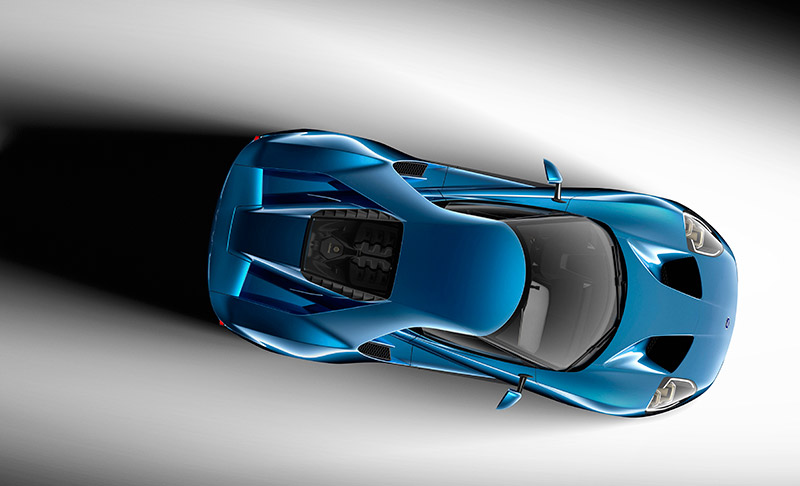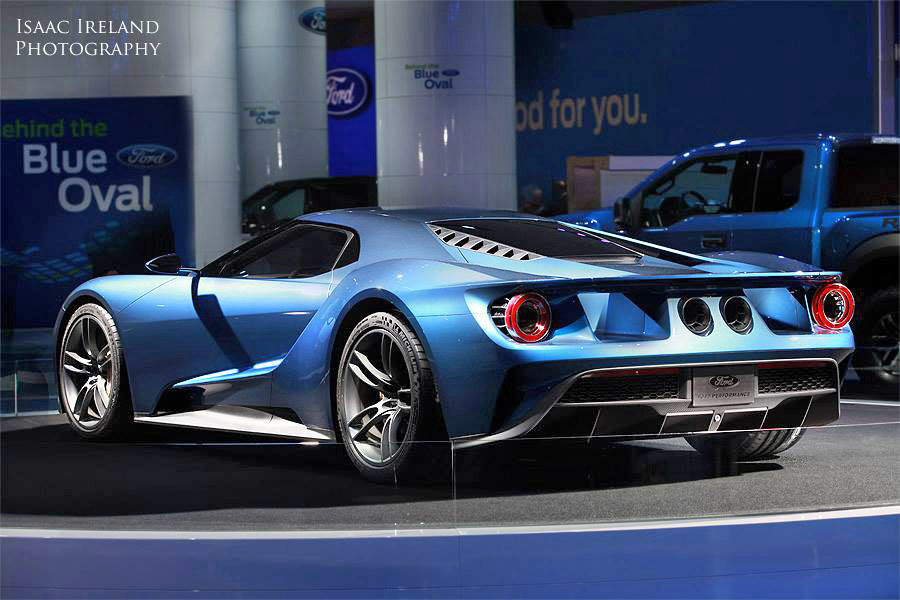
Camilo Pardo was the Chief Designer of the Ford GT concept car and went on to be the chief designer of the 2005/2006 production Ford GT. Ten years later, this is Camilo’s outlook on the up and coming new Ford GT, debuted at the 2015 North American International Auto Show.

Overall Impression
“With this car, it takes me a minute to gather my thoughts and dissect the design.”
“It’s great to see that Ford has the ability to follow up with a vehicle that has been a pillar of their racing history. The new Ford GT has taken the vehicle’s DNA and evolved from the 1966, to the 2005, and now into something very advanced.”
“There’s definitely an evolution of all the ingredients that make up a GT40/Ford GT integrated into a very complex, aerodynamically-influenced configuration.”
“Personally, I’m very proud to be a part of this evolution with the contribution of the 2005 model.”
“It’s very apparent that this design is geared towards racing development. Although we hear that it’s a street vehicle, it definitely looks like it’s assembly, engineering and design is out to win races.”
“I would imagine, it’s target once again would be the same as Henry Ford II’s, which is to outperform Ferrari in all categories.”
Design Particulars

“The design is as exciting as it is complex. There are enough lines here for three cars. I would guess that this design came from a young and up-and-coming designer. It has the complexity of a transformer, which would incorporate or be parallel to the shapes you would find in an LMP1 Le Mans vehicle that’s manipulating a lot of air, for many reasons including downforce and cooling.”
“Overall I would say that this is the most exciting part of the vehicle. The airflow races through it’s body, especially around the teardrop fuselage that sneaks underneath the c-pillar’s flying buttresses.”
“I would rate it very high, with it’s exciting and entertaining surface development.”
“My favorite view would definitely be the rear as you look through the air openings, and it’s beautiful plan view.”

Design Walkthrough
Front End:
“The front is assembled by a series of bladed edges. This makes it very aggressive, but it doesn’t establish volume or frontal surface. I’d compare it to an LMP1 or a Formula 1 car.”
“The headlamps are my favorite part of the front end . They indicate the most advanced system in headlamp technology.

“The combination of the headlamps and the hood extractors really hold the Ford GT personality together.”
“To me the mirrors look like they’ll have to be re-addressed before production.”
Profile:
“The profile also holds the Ford GT proportions, with a long front overhang and a trailing windshield. There’s a lot of activity in character lines that stack from the roof, the DLO, the shoulder, the belt line, the side intake and rocker configuration. It’s definitely exciting, but I would probably select some to be more dominant and others to be sub-dominant!”
“Let me just say that the graphic outline of the C-pillar going down into the door is powerful enough to hold together the theme of the side view.”

“Now we can walk to what I would consider to be the most dynamic part of the vehicle: the rear.”
The rear:
“From 3/4 rear you get a very good understanding of the side rocker complexity. It’s extremely complicated and layered, in order to achieve it’s dramatic appearance.”

“The rear is an assembly of sculptural elements. The architectural assembly is composed of a tapered fuselage that terminates in a trapezoidal exhaust housing with a wing that bridges the rear fender pontoons and dynamic tail lamps.”
“The tail lamp assembly is a strong statement and integrates functionality atypical to a road car.”
“This structure is met quickly by a rear venturi that channels air from the belly pan.”
“Overall, there’s enough here to make a Countach look domesticated.”
Plan View:
“The plan view of the vehicle really shows the harmony of all this complexity working together.”
Overall Vehicle Anatomy
“I personally thought that the manual transmission was only going to last a few minutes after 2006. It was great to see how the 2006 Ford GT hung on to it’s integrity against the technology that was growing around it.”
“It was very obvious that carbon fiber vs. aluminum, a DCT vs. a manual transmission, and whatever overall recipe that would be the most efficient is the way of the future.”
“I do remember discussing with my old friend Carroll Shelby that we should think about a next vehicle, powered by a lighter aluminum V6 faster than a big heavy V8. It’s good to see that we were all in line on the future of performance.”
“As an automotive designer I’ve always been in a position to accommodate engineering’s demands for ultimate performance. We respect their calculations as we expect them to respect our design ability. If the performance of the car is at it’s ultimate with a dual clutch transmission, traction control, stability control, and a digital interface, than that’s what we have to accommodate in our design.”
“This new Ford GT represents the state of the art in performance vehicles.”

Find out more about Camilo at http://www.camilopardo.com.
Follow Camilo on Facebook at https://www.facebook.com/camilopardoart
View Isaac Ireland Photography here.

